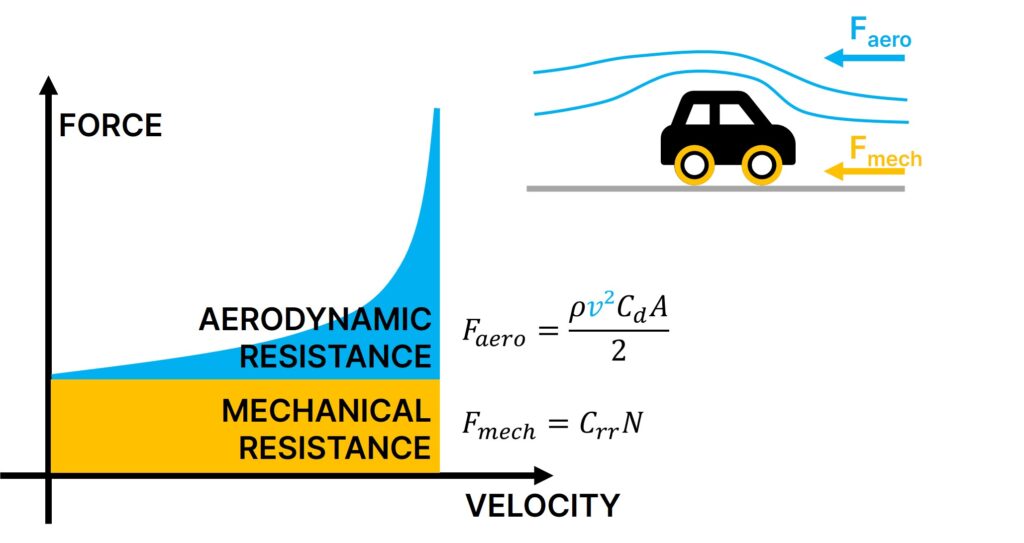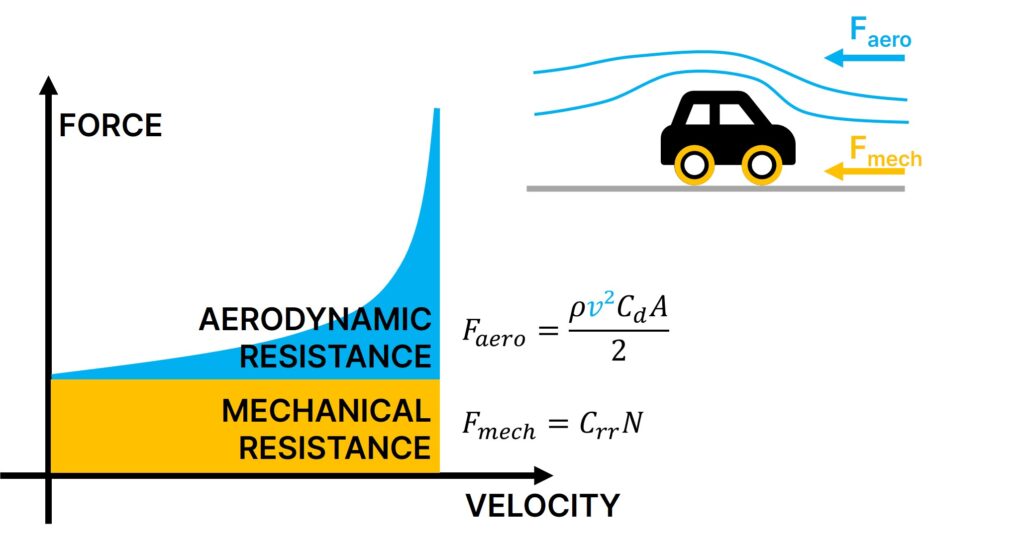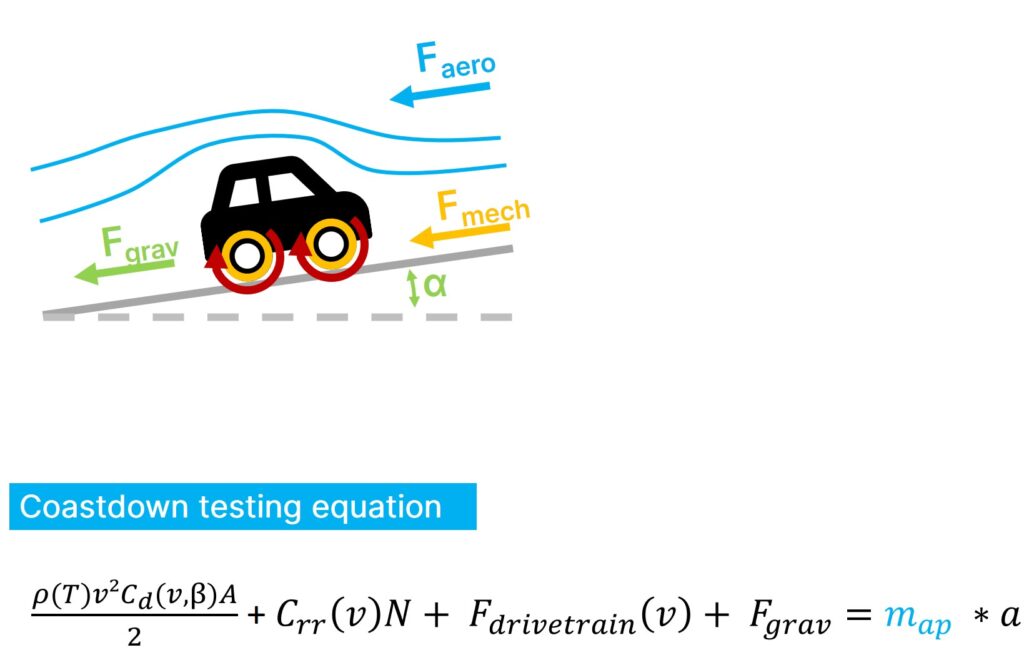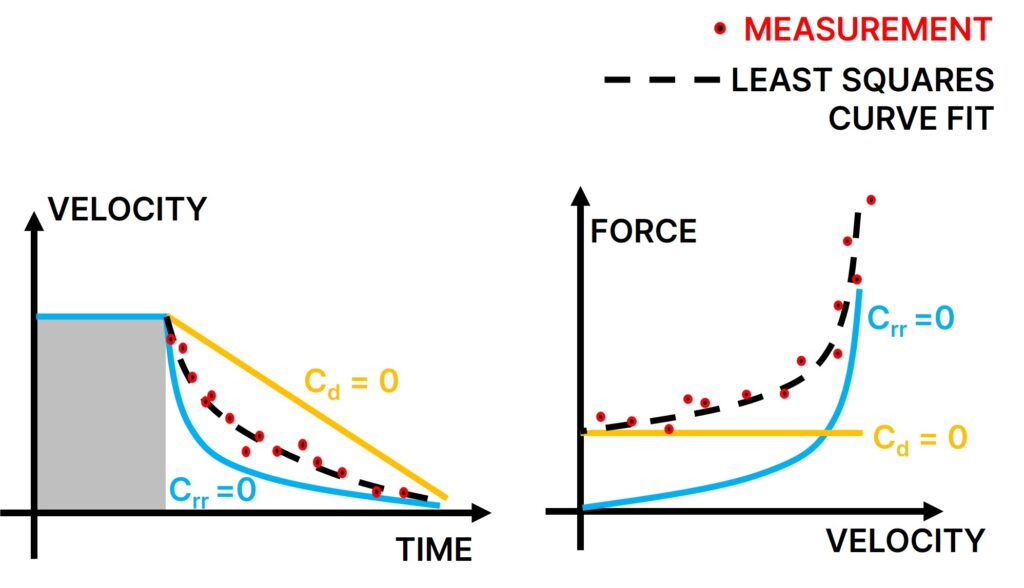How To Use Coastdown Testing for Drag Measurement
[Editor’s Note: We use terms like coefficient of drag and aerodynamics frequently in our write ups. We thought you might be interested to learn some of the tech behind those terms. Our colleague Wouter Remmerie of AirShaper offered this write up and video to fill in all of the knowledge you might need to further understand this critical technology.]
What is Coastdown Testing?
A coastdown test is often used to measure the mechanical and aerodynamic resistance that acts on a vehicle.

The starting point is the vehicle going at a constant speed. Then, the clutch is engaged to let the vehicle slow down. During this decelleration, the distance travelled is monitored to calculate the aerodynamic drag.
How Do You Calculate the Drag Coefficient?
Using a simple approximation, the vehicle is slowed down by two forces: (1) the mechanical resistance and (2) the aerodynamic resistance. The main component of the mechanical resistance is the rolling resistance of the tires on the ground and this force remains relatively constant versus velocity, whereas the aerodynamic resistance changes with the second power of the velocity. This means aerodynamic drag has little impact at low speeds but becomes the dominant force at high speeds.

According to Newont’s 2nd law, the acceleration of the vehicle is determined by the sum of the forces acting on it. This means we obtain an equation that features a rolling resistance coefficient, Crr, and a drag coefficient, Cd.

To understand how both coefficients can be extracted from a single equation, let’s look at two extreme scenarios:

Scenario 1 – No aerodynamic resistance
Imagine the vehicle is running in a vacuum, where there is no aerodynamic drag. It would only slow down due to mechanical resistance. As this force and thus decelleration are constant, the resulting velocity curve is linear.
Scenario 2 – No mechanical resistance
In the absence of mechanical resistance, it is the non-linear aerodynamic resistance slowing down the car. A high force at high speeds and a low force at low speeds would create a non-linear decelleration curve. The car would slow down faster at high velocity and slower at low velocity.
In a real test, the measured velocity curve will be a combination of both. By adjusting both coefficients the predicted curve can be made to match the measured one. This technique is called least squares regression. In the end, you will have values for both the aerodynamic & mechanical resistance.

In reality, the equations are much more complex, with drivetrain resistance, ambient conditions, wind directions, weight, inertia and other factors all having an impact.

Nevertheless, most of these can also be taken into account and coastdown testing still is an industry standard for measuring the aerodynamic performance of a car. You could even get out there in your own car, with your cell phone’s GPS, and measure its drag yourself. Check out our video below
Video
Related Stories by Wouter Remmerie
Tech: Why Aerodynamics Matter
Tech: How Aerodynamics Impact EV Range

Hello,
I am trying to perform a coast down test for my team’s student formula race car but I am having trouble finding an accurate rolling resistance coefficient. I reached out to the tire manufacturer, and they said they did not have this value which I found surprising. Do you have any advice on how to find this value or a reasonable range that this value should remain within.
@Jackson,
We don’t know, but we know someone who could help you. Our colleague Wouter Remmerie. He’s an expert on such things. –Ed.